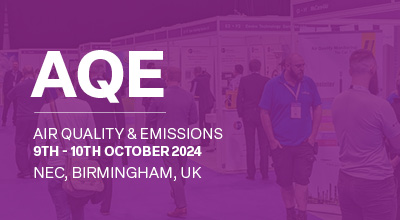| Abstract Title: | Industrial Emission to Air NOx abatement Technologies |
| Presenter Name: | Ms ANUSHREE KHIRIA |
| Co-authors/Co-presenters: | Mr Geet Talreja |
| Company/Organisation: | Yara Environmental Technologies |
| Country: | India |
Abstract Information :
Power & Industrial sector is currently seeking for the cost-effective minimization of NOX emissions. This demanding challenge is being met by Yara through advanced technologies successfully applied in European and other power plants. Our, advanced technologies reduce the nitrogen oxides for any operating scenario with NOX abatement solutions such as Advanced Selective Non-Catalytic Reduction (SNCR) or reduced- size configurations of Selective Catalytic Reduction (SCR). The National Emission Ceilings Regulations required the UK to reduce emissions of Nitrogen Oxides by 55% compared to emissions in 2005 by 2020 and in each subsequent year up to and including 2029 (and by 73% compared to emissions in 2005 by 2030) Increasingly stringent worldwide environmental legislation is requiring the Industrial sector to install high-efficiency abatement technologies to comply with the pollutant emission limits imposed by the applicable their national standards. In particular, nitrogen oxide (NOX) reduction can be performed by the application of different strategies. Secondary measures of abatement control are those systems that reduce the NOX content after the formation in the combustion using a chemical reagent. These are SNCR (Selective Non-Catalytic Reduction) and SCR (Selective Catalytic Reduction) systems. - SNCR is the most appropriate and widely used technology to reach reduction efficiencies of up to 50% required in many processes. - SCR is the catalyst bases technology use to reach high reduction efficiencies of up to 99% required in most of the countries. 1. SNCR technology In order to minimize NOX emissions under a cost-effective approach, YARA has developed a non-catalytic abatement technology which is an effective complement to SCR systems. In general, the maximum potential of non-catalytic secondary measures, such as SNCR, has been shown in small industrial boilers. The following are the key performance parameters in the SNCR process: • Temperature – O2 and CO concentrations define the operating temperature window where the abatement reactions occur at high efficiency rates. • NOX profiles – NOX profiles are produced in the combustion zone based on the specific design of the boilers. However, these profiles are non-uniform and not constant over time due to the dynamics of the combustion process. Precise knowledge of the NOX content in the injection zones is needed to achieve optimized injection of the correct reagent quantity per injection port. The approach designed by YARA is intended to fit these features by achieving a highly flexible reagent injection in the most suitable furnace areas. The availability of advanced in- furnace monitoring capabilities provides a temperature profile and composition (NOX, O2 and CO) upstream the injection zone to assure optimized injection profiles based on the individual control of reagent injection in each lance. This optimized injection approach brings two direct benefits: higher NOX reduction rates compared with conventional applications and effective control of ammonia slip. 2. SCR technology The abatement of NOx (NO and NO2) is achieved by the use of a "Selective Catalytic Reduction (SCR) system". This is a dry flue gas treatment process, which uses ammonia (NH3) as a reducing agent and a catalyst. The selective catalytic reduction of NOX is performed on a catalyst (substrate material TiO2 as Anatase and transition metals such as V, W and/or Mo as active sites) with ammonia as a reducing agent forming harmless reaction products according to the following reaction mechanisms: NO2 + NO + 2 NH3 ↔ 2 N2 + 3 H2O 4 NO + 4 NH3 + O2 ↔ 4 N2 + 6 H2O 2 NO2 + 4 NH3 + O2 ↔ 3 N2 + 6 H2O Ammonia (NH3) is injected into flue gas and reacts with NOx on the SCR catalyst resulting in nitrogen (N2) and water (H2O). In this case aqueous ammonia (24%) is used as reduction agent. Few side reactions occur under certain conditions. One of these is oxidation of SO2 into SO3, the so-called SO2 conversion. 2 SO2 + O2 ↔ 2 SO3 This reaction has to be minimized by optimal catalyst design to avoid the formation of ammonia - sulfate compounds in the catalyst and downstream of the SCR system.



